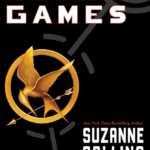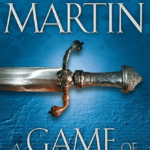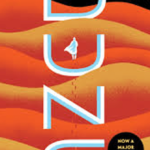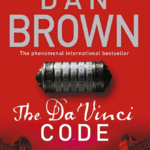
Book Title: The Da Vinci Code
Author’s Name: Dan Brown
About the Author: Dan Brown is an American author best known for his thrilling mystery novels that combine historical themes with modern conspiracies.
- Early Life and Background: Dan Brown was born on June 22, 1964, in Exeter, New Hampshire. He grew up in a family that encouraged intellectual exploration, which influenced his interest in literature, music, and the arts. Brown attended Amherst College and later pursued a career in music before transitioning into writing.
- Key Achievements or Milestones in Their Career: Brown achieved worldwide fame with the publication of The Da Vinci Code in 2003. The book became a global phenomenon, sparking discussions on religion, art, and history. It also led to a successful film adaptation.
- Other Notable Works Authored by Them: Some of Brown’s other popular novels include:
- Angels & Demons (2000)
- Inferno (2013)
- Origin (2017)
- Awards or Recognition Received: Brown’s works have earned him several accolades, including being named one of the 100 Most Influential People by Time Magazine in 2005. His books have sold over 200 million copies worldwide, and The Da Vinci Code remains one of the best-selling books of all time.
Book Synopsis:
- Genre: Thriller, Mystery, Detective Fiction
- Plot Introduction: The Da Vinci Code follows Robert Langdon, a Harvard symbologist, and Sophie Neveu, a cryptologist, as they unravel a series of puzzles to solve a murder in the Louvre Museum. Their journey uncovers hidden secrets about the Holy Grail, challenging established religious beliefs and revealing a centuries-old conspiracy.
- Key Characters:
- Robert Langdon: A knowledgeable and analytical symbologist.
- Sophie Neveu: A skilled cryptologist with a personal connection to the mystery.
- Leigh Teabing: An eccentric historian with deep knowledge of the Grail legend.
- Themes: The novel delves into themes of religion, art, history, and the conflict between science and faith. It raises questions about the interpretation of historical events and the power of secret societies.
- Tone and Style: The narrative is fast-paced, combining intellectual puzzles with suspenseful action. Brown’s detailed descriptions of historical sites and art add depth to the thrilling plot.
Ratings & Reviews:
- Average User Rating:
- Goodreads: 3.9/5
- Amazon: 4.5/5
- Notable Reviews and General Consensus: Critics and readers alike have praised The Da Vinci Code for its gripping storyline and thought-provoking subject matter. However, it has also faced criticism from scholars and religious groups for its historical inaccuracies and controversial portrayal of religious themes.
- Unique Aspects Praised or Critiqued:
- Praised: The intricate puzzles and clever use of historical references keep readers engaged. The blend of fact and fiction makes it a compelling read.
- Critiqued: Some readers feel that the book’s pacing can be inconsistent, and the heavy use of exposition might detract from the action.
- Image Source: Amazon.com












